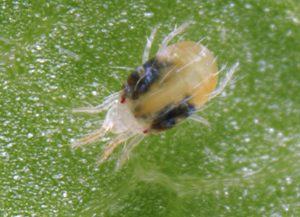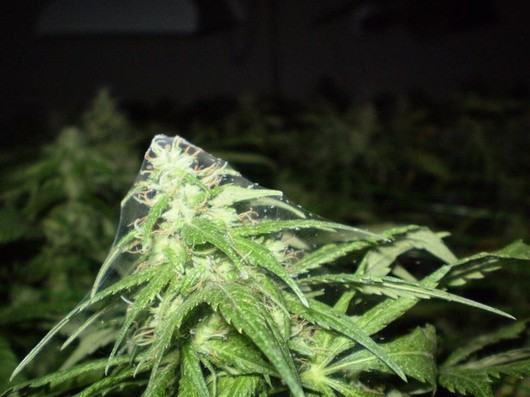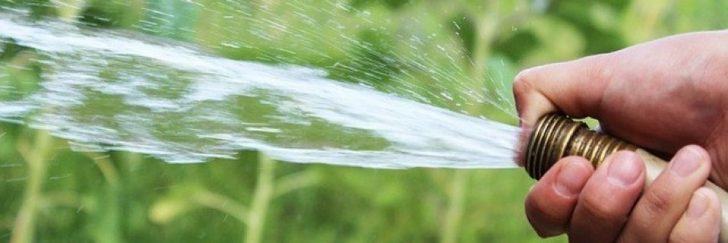Mites are probably one of the most invasive pests and harmful that we can find both in indoor and outdoor cultivation of marijuana plants. The red spider and the entire family of mites and micro-mites seriously damage our plant. With their tiny teeth, they bite and pierce the leaves to feed and extract chlorophyll of it, which is a vital component for photosynthesis and the proper growth of any plant. Spider's saliva also has toxins and substances that make it sick causing our cannabis plant to be weak against other possible pests such as fungi and other bacteria.

We can end up having a plague without realizing it. We can bring it from outside the home, in our clothes, shoes, hair ... or, being so tiny, it can come with other insects or with our pets. They can also appear when some parameter in the ecosystem becomes unbalanced, or due to excess or lack of water, excess liquid fertilizer, excess or deficit of sun, low biodiversity, etc. They reproduce exponentially, so the invasion is fast and can kill our plant in a matter of days. The eggs are already mature in 3 days and 5 days after hatching, the mites are adults and the females will lay the next generation of eggs again. Each one can lay about 50 eggs on average, so they can be multiplied very quickly.
How to detect if our marijuana plant has mites?
Micro mites are almost imperceptible to the human eye , not to say practically invisible. They can measure around 0.2mm, so they are difficult to see even with what home microscope. However, we have some signs to detect if we have mites in our marijuana plant:
- They are translucent , with yellowish tone and they scroll very fast .
- They are sensitive to light, so they hide in the center of the plant, by branches or recently emerged leaves , or even between the buds where they will begin to weave their web.

Photo source: LaMarihuana. com
- White dots on sheets or very small spots.
- Cobwebs very fine under leaves and branches. Simply if we see a small transparent thread between the plant, we should already suspect mites or a spider in our crop and act before they multiply.
- Yellowish leaves . If the plague has spread and is advanced, we can see how the leaves change color, a sign that chlorophyll is losing, which gives all plants green. This can prevent the plant from growing properly and, in the worst case, end up dying.
- Leaves and wilting plant . We can see how the leaves wrinkle and deform, undulate.
- Brown pistils . The pistils oxidize and turn brown.
- Our marijuana plant and its flowers stop growing . With the plague, the plant runs out of food and enough strength to develop properly, so we will see how it stagnates and even how it is reduced. Pistils and trichomes decrease and no new flowers sprout.
How to prevent mites
By now we are clear that prevention is better than cure. And in the case of our cannabis cultivation, it will be much better to prevent from the first stages of growth since once we enter the flowering phase and we have flowers and buds, we reduce the options applicable to the plant if we want it for consumption. Although we think that this is not going to happen to us, it is not worth risking having some simple practices within reach:
- Lower the temperature of the growing area. Mites are comfortable in a warm, dry environment. So, especially if it is an indoor crop, we can play with the temperature without harming the plant, which also needs heat. We could look to lower the temperature to less than 20ºC.
- Organic compost and mulch for the soil. They will provide natural predators that will control the invasion of mites.
- Neem nut oil . It is a biological insecticide that prevents the appearance of spider mites and other mites.
What to do if we already have mites: how to eliminate the spider mite
 Photo source: Cannabislandia
Photo source: Cannabislandia
It is not highly recommended to use insecticides after entering the flowering phase. Insecticides are quite toxic, they can harm the plant or the consumer, so we must weigh what is best for us according to the state of the plague we have and how we see our marijuana plant. A good option is to use biological insecticides or natural predators.
- Natural predators: They feed on mites and can help us to solve the mite plague effectively. Of course, once these disappear, they will also do it to look for food. Amblyseius californicus are the most common but there are other insects that will help us to do the same: Thysanoptera, Orius, Geocoris, Frankliniella occidentalis.
- Spray the plant with water . The water will destroy their cobweb house and will also cause them to fall from the leaves, leaving them without food, so it will help them die weakened. The important thing here is that we add water to the plant with some pressure so that it displaces the invaders and gives us results, always trying that our plant suffers the least and does not break. We can use a hose where we can regulate the pressure or a sprayer that has a minimum of force.
- Vacuum the sheets . With care, we can vacuum the plant to absorb the mites and dispose of the remains away from the plant.
- Acaricidal chemical insecticide . If we are in the growth phase, not in the flowering phase, or if the plant is not intended for consumption, we always have the option of a chemical insecticide and more powerful if the previous options have not worked for us and we see that the plague is increasing at times. This option will eradicate everything from eggs and small larvae to adult and mature mites and micro-mites.
- Natural products . You can try biological products that are not harmful for human consumption such as: tansy infusion, garlic decoction, pyrethrum or Dalmatian pyrith, etc.
- Remove the infected plant . If you have a crop with several marijuana plants and you see that the plague is already very advanced in one of them, even if it is sad, get rid of it. Perhaps it is worth sacrificing a small portion of the crop before watching the others fall one by one and quickly. Get rid of it and clean the area well with bleach and thoroughly, and try to take care of the others with the preventive measures that we have previously discussed.
We hope this guide will help you continue taking care of your cannabis plant. You can also read other articles about pests, such as caterpillar pests , in our blog.
